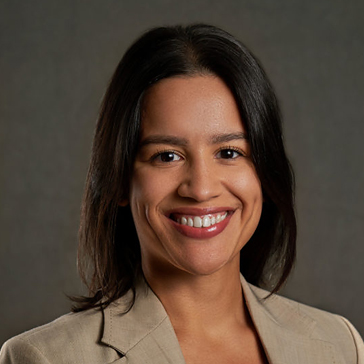July 18, 2024
Imagine a school system where decisions aren’t made top-down, but built together by the voices of students, parents, educators and the community. This is the transformative power of equitable stakeholder engagement. Alliance College-Ready Public Schools exemplifies this shift, moving away from a traditional top-down model to more inclusive collaboration in their long-term planning.
Equitable engagement goes beyond just informing people about decisions. It’s a dynamic exchange where all voices, especially those often unheard, actively shape the school’s future. This approach requires identifying the voices that have been historically excluded, understanding the challenges facing the entire community from their perspective, and crafting solutions together. The result? A plan everyone feels invested in. This approach reflects a broader truth: policies and programs designed to benefit those who are historically excluded often result in benefiting all of society – we know this as the curb-cut effect. When we prioritize equity in our initiatives, we create solutions that are truly representative and impactful for all.
When Alliance CEO Pablo Villavicencio recruited Jass Stewart, Alliance’s Chief Strategy and Innovation Officer, to lead the organization’s long-term strategic planning process, Pablo knew he wanted a community-sourced plan. Jass Stewart explains: “Our last planning process involved a broad range of stakeholders primarily after the direction was set.” This is no longer the case. Alliance partnered with Education First to implement a multi-layered strategic planning process, where school community members and leaders co-created a long-term plan through workshops and continuous feedback loops. This shift towards co-designing and co-developing isn’t a one-time event. When we view equity as a verb, we understand that it requires an ongoing commitment to change how we think, act, and work.
The outcome of this engagement is a school plan that is built on trust, empowers historically excluded voices, and reflects a deeper understanding of the community’s needs and aspirations – all of which are a recipe for long-term success and a stronger school-community bond.
Best Practices & Lessons Learned
Alliance’s journey towards equitable stakeholder engagement offers three valuable lessons for any school aiming to create a more inclusive and collaborative strategic plan.
- #1 Invest in time and relationship-building for deeper stakeholder engagement. Deep and authentic stakeholder engagement thrives on dedicated time and relationship-building. By investing in these upfront, you enable deeper connection throughout the process – from planning and execution to co-designing the work itself. Think of equitable stakeholder engagement as a marathon, not a sprint. It requires careful planning and a commitment to building strong relationships. Alliance’s commitment to co-designing and building trust and connection within the school community exemplifies this well. They created opportunities for open communication, hosting focus groups with over 150 students, parents, and staff. They both leveraged existing spaces like the Principal’s professional learning time and created new spaces like the School Community Working Group to co-create the school’s vision, mission, and priorities. These opportunities provide a space for stakeholders to feel valued and invested in the school network’s future. Equally important is setting realistic timelines that allow for meaningful collaboration and adaptations. Rushing the process can lead to participants feeling confused and disconnected. Jass Stewart highlights how a compressed timeline for transitioning their long-term strategy to annual planning “caused people to feel like they lost track” of the process. Realistic timelines fuel deeper engagement and ensure staff can translate a community-informed vision into actionable annual goals. Remember, it’s important to plan for the journey, not just the destination.
- #2 Determine early in the process who, why, and how stakeholders will be engaged. In the initial stages of any stakeholder engagement process, it’s crucial to determine which stakeholders will be involved, the method in which they will be engaged, and how their input will be incorporated. Engaging a wide range of stakeholders early in any equitable engagement process is essential to building trust and community buy-in. This is an ongoing process that requires sustained effort and investment. At the beginning of this process, Education First and Alliance developed a partner engagement map to outline the who, what, and how of stakeholder involvement. Jass Stewart highlighted that what worked best with the map was that “we met our various stakeholders where they were – through one-on-one interviews, focus groups, working groups, in-person shadowing, and more.” Working towards making sure everyone has a representative voice at the table and tailoring your engagement appropriately will drive desired outcomes. Surveys are a great method for quick outreach to gather feedback from a wide audience, while focus groups or interviews can provide much deeper insights and engagement from targeted groups. By embracing a range of engagement strategies and charting out a plan early, organizations can lay the groundwork for successful and equitable engagement.
- #3 Empower historically excluded voices to participate in shared decision-making. True equity demands more than just listening to historically excluded voices. Sustainable and impactful solutions emerge when students, community members, teachers and staff – those closest to the problems school systems are trying to solve – are empowered to co-create solutions alongside decision-makers. Their lived experiences offer invaluable perspectives and solutions often overlooked by “experts” or those in positions of power. When stakeholders help to shape the plan, they become invested in its success, leading to stronger implementation. Throughout the strategic planning process, Alliance leaders actively empowered students, teachers, and staff in its School Community Working Group to co-design the vision, mission, and strategic priorities. As Jass Stewart explains, this aligns with their core values: “One of our values is to grow together. Here again, we lived out this value in the strategic planning process.” Members workshopped and presented recommendations to Alliance Cabinet and Leadership teams for careful consideration and final decisions. With the support of Education First, this process was intentionally designed to foster collaboration and trust between those in positions of power and decision-making authority in the organization and those who have been historically furthest from power. Success with this approach requires clearly defining expectations upfront. That means defining working group roles, decision-making authority, and the time commitment required to actively participate and engage in this collaborative process. For leaders who are willing to share power with historically excluded voices, the reward is a process rooted in equity, and effective, sustainable solutions that have buy-in from a broad spectrum of stakeholders.
Alliance College-Ready Public Schools exemplifies the transformative potential of equitable stakeholder engagement in shaping the future of education. By moving away from traditional top-down approaches and actively involving students, parents, educators, and other partners in decision-making processes, schools can foster a culture of collaboration, trust, and empowerment. Through deep engagement, realistic timelines, and a commitment to amplifying historically excluded voices, schools can build inclusivity and understanding, and strengthen the bonds within their community. As we look to the future of education, it is important to consider the impact of relationship building, authentic engagement, and empowering historically excluded voices in the pursuit of equitable stakeholder engagement.




